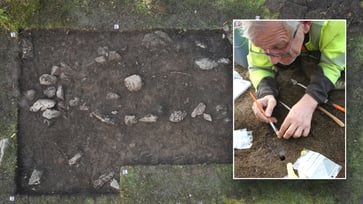Evidence of prehistoric fish discovered in the Connecticut River by researchers.
The Connecticut River Conservancy conducts a survey following community reports of prehistoric fish sightings.

The Connecticut River Conservancy (CRC) is currently conducting a study of the Connecticut River's water quality in Massachusetts, Vermont, and New Hampshire through regular sampling.
Environmental DNA (eDNA) was used for the first time ever to detect evidence of shortnose sturgeons in the river, according to the CRC's press release.
James Garner, a PhD Candidate at UMass Amherst, stated via email to Planet Chronicle Digital that the investigation was initiated due to reports from the local "fisherfolk community" about sightings of the prehistoric fish.
The presence of shortnose sturgeon upstream of these dams has been scientifically confirmed through multiple positive environmental DNA detections, according to the community members' reports.

According to the NOAA, shortnose sturgeon possess five rows of external, bony plates known as scutes, which serve as their "body armor."
They can weigh up to 50 pounds and stretch 5 feet long.
Garner stated that this collaboration underscores the importance of local knowledge in guiding scientific research and showcases how eDNA technology can aid in monitoring and safeguarding endangered species.
According to the Florida Fish and Wildlife Conservation Commission, shortnose sturgeon are considered "prehistoric" because they have been around since the era of dinosaurs.
It is illegal to possess shortnose sturgeon, as they are protected regardless of their location, according to the Massachusetts Department of Fish & Game.

In the mid-1800s, the Atlantic and shortnose sturgeon supported a profitable fishery for caviar, smoked meat, and oil, as stated by the NOAA.
Towards the end of the century, sturgeons were being over-exploited.
In 1890, 7 million pounds of sturgeon were caught, while only 23,000 pounds were caught a century later, according to NOAA.
Numerous dams on the mainstem, habitat degradation, and commercial fishing have negatively impacted populations of this fish, as they have for many native migratory species, according to the CRC's press release.

Many organizations and researchers collaborated with the CRC on the discovery.
The University of Maine developed shortnose sturgeon primers and probes, which were used in a survey as part of a diadromous species eDNA toolkit supported by the NOAA.
lifestyle
You might also like
- Post-inauguration, the surprising truths about DC travel costs.
- Melania and Donald Trump celebrate their 20th wedding anniversary: View the images.
- John Schneider, known for his role in 'Dukes of Hazzard,' remains steadfast in his belief: "God has a plan."
- Notre Dame football coach and Catholic convert is 'not shy about' the importance of faith.
- Trump confidant and unofficial spiritual advisor: "God is granting America another opportunity"



















